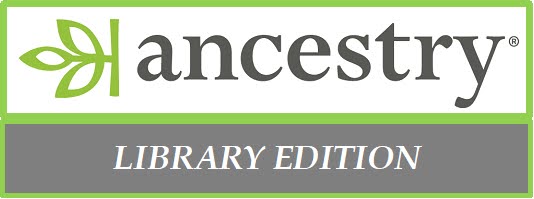According to the calendar, it is Spring!!!
This season always makes me feel like cleaning and organizing! If you feel the same way...watch the video to learn how digitizing can be the way to clean up & organize your family research & keepsakes!
This season always makes me feel like cleaning and organizing! If you feel the same way...watch the video to learn how digitizing can be the way to clean up & organize your family research & keepsakes!
 |
| This "Double Wedding Ring" quilt may have been created as a gift for newlyweds. |
 |
| "Anvil" Quilt Pattern (also called "Jacob's Ladder") |
 |
| Make sure to take a phot of the full quilt top, plus some detail snapshots. In this photo of a "Drunkard's Path," it documents the two blocks, plus the double border, and binding. |
March 9th was the one year anniversary of Governor Mike DeWine's declaration of a State of Emergency in Ohio due to detection of the COVID-19 coronavirus in the state.
Today, we want to take a look at the impact that the COVID-19 virus has had on our lives this past year.
Among the genealogy databases the MCDL offers, FindMyPast is often described as a collection of records for the United Kingdom and Ireland. While FindMyPast’s collections are especially strong for this part of the world, there are many records for the United States, too.
Tip #1 - Access FindMyPast from Medina Library only. Any computer in the Medina branch should have access - or come visit the Family History & Learning Center for assistance. Not all records are available with the library’s subscription, but it will get you access to a lot of their collections!
Tip #2 - Skip the (first) Search. It sounds counterintuitive, but FindMyPast's first search screen isn’t that helpful! Leave the fields blank and just click the “Search” button. This will take you to a search screen with more options. It will also give you the option to view all of the record collections that FindMyPast has to offer (see below).
 |
| Leave the fields blank, and just click search. |
 |
| Use the search form at the left, or click "All record sets" to see the collections in FindMyPast. A few collections are listed below that everyone should explore! |
Tip #3 - Use the "Advanced Options" help features. FindMyPast tries to get you the records you want. For the best results, enter a minimal amount of information into the search form, and then filter the search results. Filters for geographic locale and record types are on the left.
Also, take advantage of the help they give you: Use “name variants” when searching names and use the terminology they offer you with the “Browse Category” lists. All of these techniques will make your searches more efficient in FindMyPast.
This collection includes records for over 200,000,000 (yes, that many zeroes!) from the United States, between the 17th and 20th century. Records may include licenses, certificates, registers, bonds, newspaper announcements and other records. Some of the records will be images of the original document, while others may be only transcripts. New records are periodically added to the collection. If you’ve been having trouble documenting a marriage, search this collection -- it may have the record you need!
2) Passenger Lists Leaving UK 1890-1960
While many of us can find passenger lists when ancestors arrived at Castle Garden, Ellis Island, and other ports, it’s rare to find an outgoing passenger list for them. This collection, found exclusively on FindMyPast has 30,000,000+ records for individuals heading to the U.S. and Canada. (And remember, this isn’t just for British and Irish ancestors -- Eastern European immigrants sometimes stopped through an English port before traveling on to New York!) It’s worth a search, to see if you might be able to document the start of your ancestor’s immigration journey! Learn more about this collection here.
While you can find census records in many genealogy databases, FindMyPast’s collection has different indexing and search algorithms than Ancestry or FamilySearch. If you haven’t had luck in finding your family on the census, search for them again on FindMyPast.
FindMyPast includes over 500 collections of Roman Catholic church records for dioceses in the worldwide. In the United States, if your ancestors attended services in Baltimore, Chicago, Cincinnati, New York, Toledo, or Philadelphia, then you will definitely want to search these collections. Most of these records are available exclusively on FindMyPast.
Because it relies heavily on filtering your search results, searching in FindMyPast feels a bit different than searching in other genealogy databases. If you find yourself getting frustrated or need any assistance, please reach out to the MCDL Genealogy Team at me-team.genealogy@mcdl.info or 330-725-0588 x2070 and we'll be happy to assist you.
Please visit our new blog address at: https://vwmfhcenter.blogspot.com/ A Basic Tutorial By Lisa Rienerth Before I begin with this librar...
